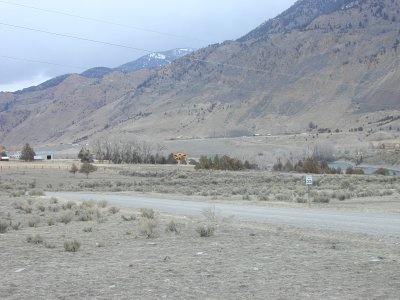|
DIMENSIONS: ecosystem |
Yellowstone National Park Policy: Natural Regulation
What Is Natural Regulation? Natural regulation is a scientific theory that
describes the process by which wildlife populations fluctuate over
time. Fluctuation in population abundance is attributed
to non-constant birth and death rates, which are affected by a multitude
of factors including, winter severity, forage quantity and quality,
immigration and emigration, hunting and predation by other wildlife. Yellowstone
National Park has adapted natural regulation theory
to management policies, affecting elk within the park.
For a more complete summary of the science
behind natural regulation, the controversy
surrounding natural regulation policy, and interviews
from biological professionals, visit natural
regulation concepts. What are the necessary assumptions of Natural
Regulation? In order for natural regulation to "work", certain assumptions must be met:
How Does Natural Regulation Affect Elk? A naturally regulating elk population will exhibit
a lower rate of growth, as the population size gets closer to an
area carrying capacity. Likewise,
as elk population numbers decline, the rate of growth will increase. This cycle is described as a "biofeedback response". Where large numbers of elk are found on the
same rangelands, the average condition of individual elk declines. Condition in this sense implies health, or vigor.
The amount of fat a cow elk carries would be less if that
animal were living on a densely populated rangeland, as opposed
to a sparsely populated rangeland. The relationship between elk condition and population
density has been documented on elk in Yellowstone. On the northern range, declining pregnancy rates
in elk are followed by increasing winter mortality rates of very
young and old elk where population numbers are high.
Climate and predation are also important to balancing of
elk populations under natural regulation.
From 1987-1990, a recorded 33% of newborn elk were lost to
predation by animals such as: bears, coyotes and golden eagles.
Also during this time period, a recorded 20% of the total
elk population died each winter due to limited food resources, most
of which were very young and old animals. What Is the Alternative to Natural Regulation? An alternative to using natural regulation theory to guide elk management in Yellowstone National Park is natural control. "Natural control" was a management strategy used previous to natural regulation in Yellowstone. Under natural control, Yellowstone’s previous management objectives aimed to: "limit park control operations to duplicating the action of natural predation which relieves severe overuse of vegetation and reduce extreme fluctuations in animal numbers." Therefore, the park was more actively involved in maintaining elk at "natural" levels, instead of allowing the natural regulation of elk to occu Implementing Natural Regulation: In the early 1970’s, Yellowstone embarked on a new policy of wildlife management: natural regulation. At this time, Cole was the superintendent of Yellowstone National Park. Shortly after, Houston became the new head biologist, and gave complete backing to policy of natural regulation. By implementing natural regulation policy, Yellowstone was inferring that no human influences would intervene to “control” wildlife. Ungulate populations in Yellowstone are thought to be “self-regulating”, which allowed the park to comfortably adopt natural regulation as a wildlife management policy. Landscape Requirements for Natural Regulation: Wildlife can only self-regulate in the context of a complete ecosystem, under the theory of Natural Regulation. Yellowstone National Park is not a complete ecosystem, and in fact elk herds, which summer in Yellowstone, have most or part of their winter ranges outside of the park. However, in the area immediately surrounding the park, a lot of National Forest lands, BLM, and a National Refuge (the National Elk Refuge), create a more continuous landscape. To the north, the Gallatin National Forest fosters winter rangelands for the migrating Northern Range and Gallatin elk herds. To the south, Grand Teton National Park and the National Elk Refuge provide wintering range for the Jackson herd. The Shoshone National Forest provides winter range for both the Carter Mountain herd and the North Fork Shoshone Herd. The Targhee National Forest is home to the Sand Creek herd in the winter, and to a lesser extent, the Madison-Firehole Herd. Although the landscape is fairly continuous, with the exception of road systems, intermingled towns and private land, the policy surrounding wildlife management is dramatically different depending on the landownership involved. It is hard to know if Natural Regulation is an adequate wildlife policy for Yellowstone National Park, because the same elk herds, which are “self-regulating” on Yellowstone property, are being hunted, fed, and influenced by humans in various ways when they cross park boundaries. The assumption that Yellowstone is a complete ecosystem is not correct in this instance, not necessarily because of inadequate land base surrounding the park, but because of conflicting management policy. Elk Management Policy in Regions Surrounding Yellowstone:
|

